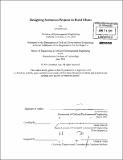| dc.contributor.advisor | Susan Murcott. | en_US |
| dc.contributor.author | Lau, Jonathan (Jonathan Ho Yin) | en_US |
| dc.contributor.other | Massachusetts Institute of Technology. Dept. of Civil and Environmental Engineering. | en_US |
| dc.coverage.spatial | f-gh--- | en_US |
| dc.date.accessioned | 2011-11-01T19:51:16Z | |
| dc.date.available | 2011-11-01T19:51:16Z | |
| dc.date.copyright | 2011 | en_US |
| dc.date.issued | 2011 | en_US |
| dc.identifier.uri | http://hdl.handle.net/1721.1/66840 | |
| dc.description | Thesis (M. Eng.)--Massachusetts Institute of Technology, Dept. of Civil and Environmental Engineering, 2011. | en_US |
| dc.description | Cataloged from PDF version of thesis. | en_US |
| dc.description | Includes bibliographical references (p. 77-78). | en_US |
| dc.description.abstract | Providing sanitation to rural areas in Ghana remains a huge challenge. Government funding is scarce while many international donor projects are ineffective. This thesis explores the difficulties with rural sanitation projects through the implementation of two pilot projects based on a co-evolutionary design and planning process. Additionally, qualitative and quantitative information provided by an NGO partner field surveys in the Northern Region, Ghana, as well as relevant literature are presented and analyzed. Two pilot Ecological Sanitation (EcoSan) latrine designs were tested on the ground by MIT researchers during January 2011. The pilot EcoSan latrines are cheaper than single-pit Ventilated- Improved-Pit (VIP) latrines built in Northern Region, Ghana. The Bin-Bin design and the Pure Home Water design have a construction cost of GHS 537 (USD $384) and GHS 943 (USD $674) respectively. However, social acceptability of EcoSan technology remains uncertain. In an assessment matrix, which includes five different latrine designs, the Bin-Bin and Sanergy latrine designs receive the highest scores (19 out of 27) for a given set of design and evaluation criteria. Potential areas for cost reductions and design improvements are identified. The following is recommended for organizations working in sanitation in rural Ghana: e Shift away from heavily subsidized, top-down sanitation projects: Investigate the local demand and willingness to pay for latrines and experiment with for-profit models such as the Sanergy/Easy Latrine models. * Investigate low-cost building materials and supply chains that can reduce latrine costs: Pilot and test rammed-earth blocks, mud-bricks and any other suitable, locally-available building materials. Investigate centralized latrine manufacturing processes. * Explore innovative design options: Move away from single-pit VIP latrine designs; Pilot and scale-up other designs, including the Bin-Bin, Sanergy and Easy latrines, in order to assess their social acceptability and costs. e Consolidate the work of organizations involved with sanitation: Create an easily accessible online database that summarizes various sanitation projects conducted by different organizations in Ghana to allow for effective collaboration and idea-sharing. | en_US |
| dc.description.statementofresponsibility | by Jonathan Lau. | en_US |
| dc.format.extent | 82 p. | en_US |
| dc.language.iso | eng | en_US |
| dc.publisher | Massachusetts Institute of Technology | en_US |
| dc.rights | M.I.T. theses are protected by
copyright. They may be viewed from this source for any purpose, but
reproduction or distribution in any format is prohibited without written
permission. See provided URL for inquiries about permission. | en_US |
| dc.rights.uri | http://dspace.mit.edu/handle/1721.1/7582 | en_US |
| dc.subject | Civil and Environmental Engineering. | en_US |
| dc.title | Designing sanitation projects in rural Ghana | en_US |
| dc.type | Thesis | en_US |
| dc.description.degree | M.Eng. | en_US |
| dc.contributor.department | Massachusetts Institute of Technology. Department of Civil and Environmental Engineering | |
| dc.identifier.oclc | 757754810 | en_US |
